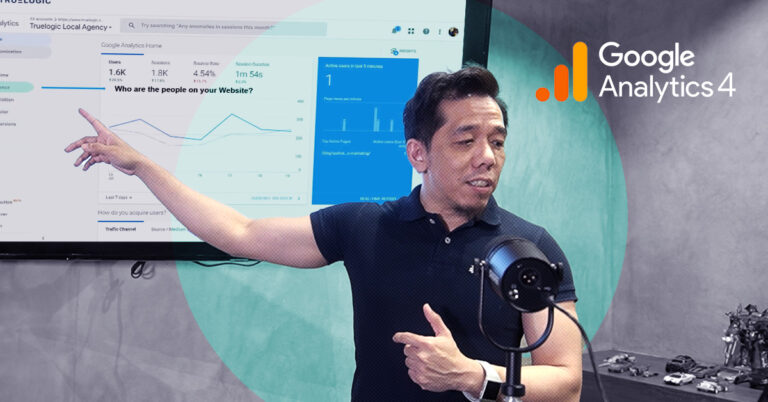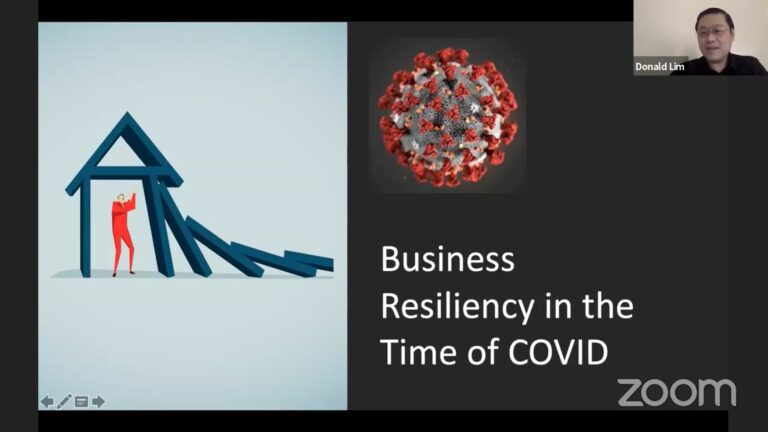Truelogic Episode 22 Recap: Effective Remarketing Strategies for your Business

Does the shirt you like on one website keep popping up when you are randomly surfing the Internet? Like when you’re on your recreational blog, have you ever looked at an e-scooter online and then realized that the ads are stalking you? Is it following you? That’s the power of remarketing.
Remarketing is the practice of serving ads across the Internet to people who have already visited your website, and it has the potential to rocket your conversion rates to new heights. It might represent a complex strategy that’s new to your marketing, but around 71% of businesses use this powerful tool for optimizing their advertising.
In today’s Truelogic DX Podcast, let’s talk about effective remarketing strategies for your business.
Podcast Transcription
Berns San Juan: Hi, everybody. Welcome to another episode of the Truelogic DX Podcast. Let’s dive straight into how remarketing works and how effective it can be for your brand and for your business.
What is remarketing?
In a technical sense, remarketing is an audience type in the Google Display Network. So, when you do Google AdWords, you can use YouTube, the Google Display Network, or the Google Search Network, but when you use the Google Display Network, you can either target an audience or people who are already visiting your website.
The Importance of Remarketing
I think I’ve got a great answer for this, because I think remarketing’s practical applications would be your product, service, or commodity’s long conversion times. Consider car purchases: no one ever buys a car on the spur of the moment. Most people who buy a home are looking for a place to live, not an investment. And so for them, it’s going to be a once in a lifetime purchase too, if they’re lucky. So they tend to have long sales conversion times. I think the job of a brand is to be there when your customers are ready to buy if you believe in your product or service.
Another practical application of remarketing, like why and when you should be following your audience around, I’ll give you guys an example. I haven’t seen my sister and her family, who live in Europe, for three years. And my nephews, whom I love dearly, have never seen Boracay, and it’s on my bucket list that they get to see it once.
I’m not going to remember to book that flight. I’m not going to remember to look for that hotel. And so, on the weekends when I get to do some recreational browsing, I get to look at plane tickets going to Boracay. I am looking for hotels in Boracay. I never really get to book them. And so I appreciate the fact that Skyscanner will chase me around. Booking.com, Agoda will chase me around to remind me that, hey, you were booking that vacation. Would you like to complete that? I think that’s terrific. I think that creates an experience for somebody like me.
How does remarketing work?
It’s really varied because when you become part of a remarketing audience, there’s actually no personally identifiable information about you. The only thing they know is that this Chrome profile accessed this website. They only know your browser data and that’s it, but no personally identifiable information. To me, this kind of advertising is sort of like a very welcome channel. What the website does is drop a cookie on your browser.
And if your browser goes to any website that’s got an allocation for the Google Display Network, the Google Display Network dynamically shows you the ad. That’s how it winds up chasing you.
How much does it cost?
It’s remarkably cheap. I would say remarketing traffic will cost you anywhere from 30 cents to 50 cents. Two pesos, four pesos, by the way, is already a lot for a remarketing click. Most of the time, you’re talking cents. Actually, with a few hundred pesos, you’re talking about a few thousand visits, right? This allows you to potentially close that sale, enabling you to be there when your customers are ready to buy.
What are the benefits of remarketing?
- Capitalize on lost web traffic.
You can keep inviting these users back to your website until you find the right moment to tug on their heartstrings.
- Target people who have already visited your website.
The people that landed on your website were not looking to bet on a horse race, you know, unless you’re a horse race betting website. They went to your website because they were looking for products and services like yours. And again, if you are a believer in the products and services you sell, then you need to understand that it’s your moral obligation to get your customers to buy from you because there are probably a dozen other bad providers out there. You’re just continuing a conversation with people that have already found the content on your website valuable.
- Segmentation
A person that visits your webpage and then reads your blog is very different from a person that visits your homepage, moves to a service page, and then reads more about that service. Those are two very different behaviors. And what it can do is if somebody targets your service page or goes to your contact form, then you can target them with ads that are stronger at conversion.
And if they visited blogs, if they read your blog, if they only looked at your homepage, then you can target them with branded ads. You can target them with just branded collateral, with just awareness material.
- An affordable marketing tactic
It’s an amazing strategy that brings you very cost-effective traffic.
Different Types of Remarketing
You can use remarketing channels in AdWords on the Google Display Network when either your website, such as your domain, or a specific product or service, has a thousand visitors.
That’s when you become eligible for remarketing. Prior to that, they just don’t have enough information about the kinds of users and the common denominating behaviors that they have. But once you’ve got a service that receives a thousand visitors, that service is eligible for a specific remarketing campaign.
This is true for Google. You create an audience inside your Google Analytics. It doesn’t have to be in your AdWords. You can call your remarketing audiences, whatever you want. The same is true for Facebook. What you have to do is drop the Facebook pixel on your service page, and then Facebook is able to collect the data. Once it’s got over a thousand users visiting the page, it then enables the remarketing capability for your website.
Or if they’re a certain user that has visited your website, we’ll get to see your content again, encouraging them to go back to your website. Now, those are the two channels.
Let’s talk about the ways you guys can use remarketing. The most basic type of remarketing is creating an audience that comes from your users.
So when you define users on your website, they reach a population of a thousand. You’re then able to define them as a specific remarketing audience. The same is true for Facebook. But the other thing you can do is you can advertise on what’s called a remarketing list.
I discovered a lot of brands still don’t do this. They’ve got email marketing lists, sometimes in the tens of thousands of email lists. And they don’t remarket to this email list. I would still say if I appreciate a product or a service, I do want to get chased around with the ad because the chances of me making an impulse purchase are very low.
Two channels where you can do remarketing are Facebook and Google AdWords. There are two ways to do remarketing: with an existing audience, such as website visitors, and with your remarketing lists. If you’ve got a thousand people on your list, you can ask Google to please show my ads to these specific people. And you do that by advertising through what’s called remarketing. The same feature is available on Facebook.
Remarketing Best Practices
- Segment your ads
One of the first things to do is really segment your ads. One of the biggest misses that I see when it comes to brand remarketing is that I see way too much branded content. So I’ll give you an example. This is just a theory. I’m not saying this is how they’re doing it.
Let’s say I’m looking at the DMCI property in Paranaque or Laguna. When I leave the DMCI’s website, what I will most likely find is that I’m getting chased by a DMCI ad. I’m not getting chased by an ad for that specific property, but there’s a reason I looked at that specific property webpage on the site. There’s no point in DMCI chasing me with a DMCI ad. Because I know who you are, you don’t want the brand to be top of mind to me in this specific situation. You’re in the consideration phase of the sales funnel.
Do you want to send me an ad for that specific property? So the best thing to do is to segment. If you guys go to the Truelogic blog, listen to the podcast, or go to the website, we will chase you with a branded ad. That’s all we do. We’ll just chase you with the branded ad. If you go to Truelogic DX, we’ll only chase you with the Truelogic DX ad. We’re not going to chase you with just the Truelogic branded ad. But if you go to a service page, we chase you with the ad for that specific service. So if you go to our website and you read the content of our social media service, we will only pursue you with a social media ad.
And so that’s one thing we do. We segment you from the general population that pays the website a visit. If we manage to successfully return you as a visitor to the website, we’re probably not going to land you on the organic page that drops the cookie on you. We’re going to drop you into a conversion page, a landing page that is more aggressive in asking for your permission to market or sell to you. So we don’t even land you on the same page because you probably already expected that page. And what we’d like to do is to give you new information that might not have been part of your consideration on your first visit.
And if you don’t fill out the page, that’s fine. A secondary ad that is more mature and slightly more aggressive will then chase you after that until you actually convert. Segmentation is very important. Whether you’re doing it on Facebook or whether you’re doing it on Google, it is vital.
- Tailor your ads to your remarketing strategy.
Some ads are meant to agitate, and some ads are just meant to remind. On the first level, we remind ourselves, then we agitate on the second level. And when I say agitate, I mean that the ad content addresses the customer’s issue. We try to bring them back to the website and then we tell them how to solve that problem.
- Mix up your marketing channels.
Don’t be afraid to mix up your marketing channels, especially your remarketing channels, given how cost-effective they are.
Should I use Google or should I use Facebook? I’ll tell them you have 500 bucks to do both. AdWords has a monthly minimum spend of around $50. So mix up your remarketing channels. If you’re B2C, you cannot afford to not be on Facebook in the Philippines. So unless you’ve got a really strong, compelling reason to not be present at both, be present at both.
- Don’t be afraid to test and fail.
I think a lot of people sometimes stop remarketing because they’re afraid of failing. And I’d say, don’t be afraid to fail. If you don’t try, you are a hundred percent not succeeding. So at the minimum, at least try it. If you fail, learn to do better.
- Perform complementary selling.
Don’t nag people that have already made the purchase. One of the remarketing strategies I hate the most is seeing people sell me the same stuff that I’ve already bought. Like if I bought an e-scooter, don’t chase me with a banner for an e-scooter. I already bought an e-scooter. Sell me safety lights, a knee pad, a helmet, a spare tire, a spare charger, but don’t sell me the e-scooter.
I’m not Squidward. I can’t ride two of those simultaneously. So this is what I mean: understand the role that complementary can play when it comes to your remarketing strategy and then make the most of what you have. To keep it brief, those are, I would say, the neediest conversations that brands and companies should be having when it comes to remarketing.
With that, I’m going to thank you for listening to another episode of the Truelogic DX Podcast. Thank you to my crew for making this happen. If you have questions or comments, give us a shout out on social media if you can. We are on Facebook, LinkedIn, and YouTube. Check out our website for more digital marketing resources. Don’t forget to subscribe to our Spotify, Google, and Apple accounts and set up your alert for new episodes.










